Elephants, Up Close and Personal
As the dry season reaches its ruthless crescendo across southern Africa, elephants become a constant and very conspicuous feature anywhere in the vicinity of water. Whether from a hide at a watering hole or on a game-drive vehicle, photographers are likely to have some close-up encounters with large herds of pachyderms. How can one possibly create interesting images when faced with a wall of grey on grey?
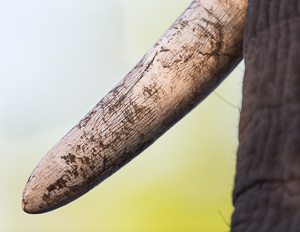 All that Glitters
All that Glitters
Tusks are elongated incisors used by elephants for a variety of life-sustaining purposes; they are also strikingly beautiful and etched with character. To highlight the tiny cracks, stains, and wear-points that are as unique as a fingerprint, isolate a single tusk against a clean background; a diagonal composition facilitates the maximum inclusion of tusk in the image. To avoid overexposing highlights, look for tusks in the shade or very soft light.
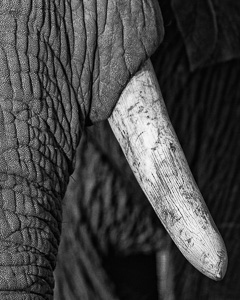
Contrast and Texture
Although universally grey, an elephant's skin is far from bland - courser than sandpaper and deeply fissured, it contrasts fabulously with the smooth whiteness of a tusk to create an image rich in tonal depth and texture. Compose in a vertical format with the tusk stretching diagonally to the bottom corner. Soft light or shade are essential to taming a very contrast-rich scene.
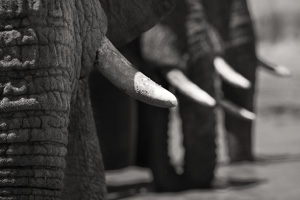
Patterns
Whenever confronted with a group of wild animals, look for a pattern (or a break in pattern) as one of the most powerful visual conventions available to a photographer. Whether it is tusks all lined up in a row, trunks hanging down at pleasing intervals, or legs arranged like posts, capturing a scene where multiple wild animals appear to be coordinating their actions makes for a very strong image.
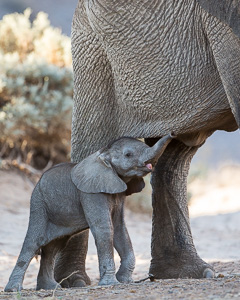
Babies are Adorable
It's not by accident that baby elephants seem to be continually obstructed by adult legs - females in the herd make a point of surrounding youngsters and corralling them away from threats. But the babies are naturally curious and will sometimes "escape" to provide a brief moment of unimpaired visibility. Patience and persistence are required as you track the infant through your viewfinder; make sure all camera settings are correct so that you can shoot quickly if/when the moment arrives.
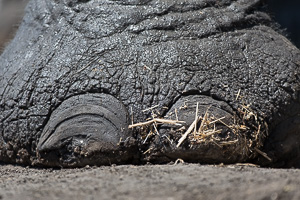
Unexpected Detail
At times, particularly in hides, elephants will come to literally within touching distance such that even a modest telephoto lens can capture extraordinary levels of detail. From eyelashes to toenails to the hair at the end of an elephant's tail, such extreme close-up can be attention-grabbing, and convey the intimacy of the safari experience.
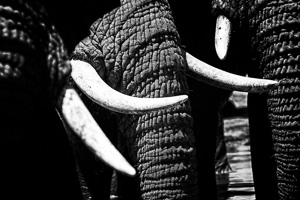
Black and White
Color is rarely a strong point of an elephant close-up, so don't be afraid to experiment with monochrome in post-processing. Switching to black and white can actually enhance the image by drawing attention to fundamental elements of composition, tonal contrast, textures, lighting, shapes, and patterns.
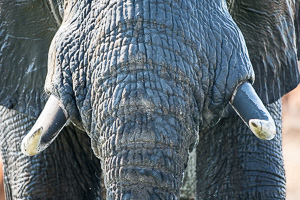 Safety First!
Safety First!
It goes without saying, but please remember that these are massively powerful and completely wild animals - they should be treated with the utmost respect. Always obey your guide, and never ask him/her to approach animals closer than their comfort zone. Never leave a blind or vehicle without your guide, and keep all body parts and equipment inside the vehicle or blind. No photo is ever worth endangering yourself or the animal - be smart and enjoy your safari!
Let us help you plan your dream safari. call toll-free: 888.227.8311 or email us today
 |
|  |
|  Share
Share










